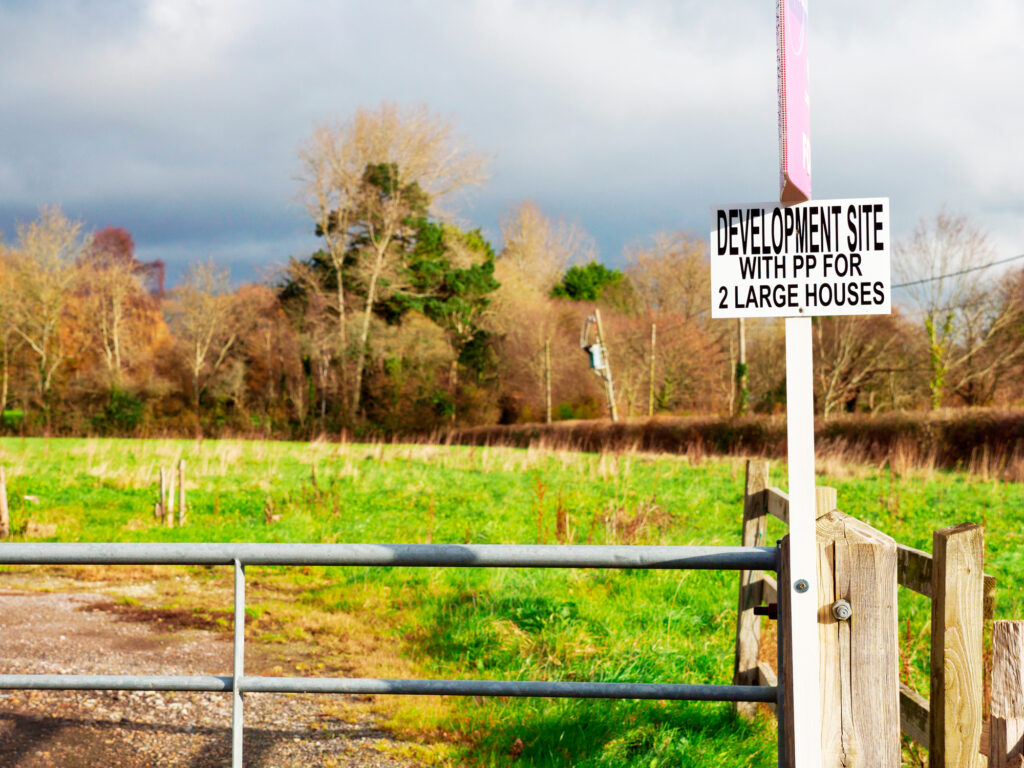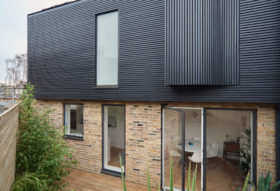
Use code BUILD for 20% off
Book here!
Use code BUILD for 20% off
Book here!After spending more than 20 years doing up clients’ properties, in 2014 New Zealand-qualified architect Sue Cambie decided to sell her flat in Brighton and buy her first house just a few streets away. By now a highly experienced renovator and passionate DIYer, she decided to manage the remodel of the terraced home herself.
Situated in Brighton’s sought-after Hanover district, the dwelling occupies a position in an attractive row of pastel-coloured residences. “I love living here and being close to the sea, and there’s also a great cafe culture. These are two of the things I missed most when I moved to the UK,” says Sue.
As chance would have it, Sue’s friend Annette was hunting for a buy-to-let apartment at the same time. “I persuaded her to purchase a property with me, so we ended up doing a 50:50 share. Whilst it became a personal investment for her, it was the best financial option for me because it meant I got to live in a house rather than a flat,” says Sue.
The house Sue purchased had been rented out for years, but even after the first viewing she knew the interior configuration wouldn’t work for her. “It was a dump and all the rooms were in the wrong places. The existing bathroom had the most amazing view of the city, and was larger than the spare bedrooms,” she says. “I switched the layout to transform it into a three-bedroom, two-bathroom house. I also decided to extend into the loft.”
Sue’s first task was to produce architectural drawings and hire a structural engineer to assist her with the project. Her design included an open-plan ground floor, which meant one internal wall had to be knocked down. She also drew up plans for a third storey, which involved converting the attic to create 27m2 of space for a new master bedroom suite.
“The structural engineer designed the steel works and physical support for the new top floor. The loft conversion came under permitted development (PD) rights, so I worked within those boundaries to make the process easy,” says Sue. “We sent the relevant documentation to an approved inspector rather than to the council, because in my experience I’ve found this paves the way for a smoother process when it comes to negotiating the works and looking at alternative solutions.”
Once she had moved in, Sue tackled whatever demolition work she could, and started by ripping up all the carpets. Having been let down twice by two different builders, she sourced a third based on a friend’s recommendation. “My main priority was to find a contractor who would work with my fantastic plumber. The firm that I settled on in the end were incredibly skilled carpenters and they did a brilliant job.”
Building work began on site in June 2014 with the demolition of partition walls on the first and ground floors. To ensure everything was done within PD rights, the ceilings on the first floor were lowered to create adequate head height in the attic, as planning regulations stipulated that the building’s elevation couldn’t be raised above the existing ridge.
“Getting the glass panel in for the large loft window required lateral thinking, as it was too large to bring up the stairs and craning it in would have been too expensive.” In the end, it was carried in through the front door and lifted up through a hole in the ceiling between the floor joists. “It was a tricky job, because it was heavy and fragile,” says Sue.
She also had to consider fire safety regulations. “As the house is three storeys above ground level with an open-plan ground floor, we had to conserve the fire escape route and install a sprinkler system that’s activated by heat,” says Sue. “We used a Plumis misting system rather than sprinklers as it’s more discreet and only requires a small pump to operate, rather than a big water storage tank.”
All in all Sue’s friend and half-owner of the property, Annette, has been bowled over by the transformation. “Sue did a fantastic job turning our house from something drab, badly arranged and frankly depressing into a bright, capacious home,” says Annette.
“All of her ideas worked brilliantly and she has increased the sense of space more than I would have believed possible. The master bedroom in the attic with its sunny ensuite, cool walk-in wardrobe and exposed brick element bring a wow factor that all visitors comment on.”
Sue’s hands-on approach to the loft conversion and renovation meant that she worked alongside her contractor on the demolition work, plastering, painting and cabinetry installation. She also arranged skips, scaffolding and scheduled the workforce, as well as doing all the landscaping herself.
The interiors have a New York loft feel, and Sue has used a quirky mix of vintage and recycled pieces. “I have a very contemporary approach in terms of design. Annette generally likes things a lot more traditional, but she thinks that what I’ve done here is amazing,” says Sue.
“The furnishings are an eclectic mix of old and new, and pretty much anything that catches my eye. I like mixing things up, modern with classic, high end with inexpensive. All of the artwork has been collected from my travels and reminds me of happy memories of places I’ve visited and things I’ve done.”
The new master bedroom features a sliding door that opens to reveal a contemporary ensuite and dressing room with a skylight that bathes the zone in daylight.
“The freestanding bath is the ultimate piece in terms of glamorous bathrooms, and I chose hidden cisterns and a wall-mounted basin to make it feel more spacious. I love the amazing view from my bedroom window, and the natural light that floods into the study means I can sit at my desk and work in the warm glow of the sun,” says Sue. “Most of all I adore the fact that, although small, it’s a bright and airy space. It’s a bit like a tardis in that the property appears much larger once you step inside.”
For Sue, another positive point is that the scheme was finished to a reasonably high specification, yet didn’t cost a fortune to accomplish. “This is the second project I’ve done for myself and I have thoroughly enjoyed the whole journey.”

